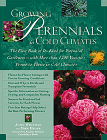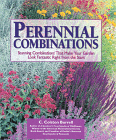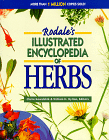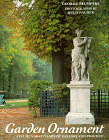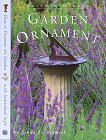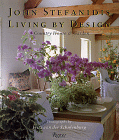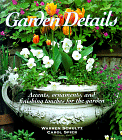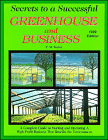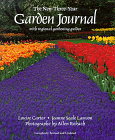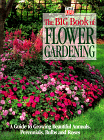- PLANTS
(perennials and herbs)
- OF
THE YEAR
PERENNIALS
 2000
PERENNIAL OF THE YEAR 2000
PERENNIAL OF THE YEAR- Scabiosa columbaria 'Butterfly Blue'
A member of the Dipsacaceae family, the nearly flat
gray-green basal foliage of the pincushion flower hugs the ground. Lacy
lavender-blue, two-inch flowers bloom on slender 12- to 15-inch stems from
late spring through early fall. Flowering begins in mid-spring with repeated
flowering throughout the growing season when consistently deadheaded. In
some climates 'Butterfly Blue' flowers until late December. Pincushion
flower derives its common name from the stamens which stand above the petals
resembling pins stuck in a pincushion. The leaves are hairy, ovate to lance-shaped,
with the upper foliage smaller and finely divided creating a mounded rosette
six to eight inches high and 12 to 15 inches wide.
 1999
PERENNIAL OF THE YEAR 1999
PERENNIAL OF THE YEAR- Rudbeckia fulgida 'Goldstrum'
- Rudbeckia fulgida 'Goldstrum'-
H/W 18-24" x 24"
- Light : full sun to
partial shade
- Zone Range 3-9 Bloom
Time: mid-to-late summer
- Rudbeckia fulgida 'Goldstrum'
- An outstanding perennial, familiar to gardeners for
decades. It is very easy to grow . No matter how dry the summer or extreme
the winter Goldstrum is noted for its consistancy and dependability.
- 'Goldstrum' is a compact plant which forms an increasingly
larger clump that is not invasive, but it certainly is determined. Very
upright plant covered with mid-sized, traditional black-eyed golden daisy
blooms. It will do well in any reasonably good garden soil.
- 'Goldstrum' is a great companion perennial with plants
of similar height such as Sedum 'Autumn Joy', Liatris spicata 'Kobold'
-- or taller ornamental grasses -- or mass planting. 'Goldstum' retains
its shape and distinctive black cone throughout the fall and winter thereby
providing excellent ornamentation.
- 'Goldstrum' is an excellent cut flower -- fresh or
dried -- also an excellent for attracting butterflies.
 1998
PERENNIAL OF THE YEAR 1998
PERENNIAL OF THE YEAR- Purple Coneflower
- Echinacea purpurea -
H/W 24"- 36" x 24"
- Light : full sun-part
shade
- Zone Range 3-8
- Bloom Time: summer
- HARDINESS Zones 3-8 LIGHT Full sun preferred. SOIL
Well-drained garden soil. Drought-tolerant. USES As a specimen, in borders,
or massed. Good choice for meadow or prairie gardens. UNIQUE QUALITIES
A bold, mid-summer blooming perennial with carmine, non-drooping flowers.
Blooms on 2- to 4-foot sturdy stems. Excellent for cutting. PLANTING INFORMATION
Water well until plants are established. Plant at the same depth as they
were in the pots. PROPAGATION 'Magnus' may be propagated by seeds, basal
cuttings, root cuttings, or division. Seed propagation is the main method
of reproduction.
- 1997 Salvia 'May Night'
- 1996 Penstemon digitalis 'Husker Red'
- 1995 Perovskia atriplicifolia
- 1994 Astilbe 'Sprite'
- 1993 Veronica 'Sunny Border Blue'
- 1992 Coreopsis verticillata 'Moonbeam'
- 1991 Heuchera micrantha 'Palace Purple'
- 1990 Phlox stolonifera
- Perennial Plant Association
-
- HERBS
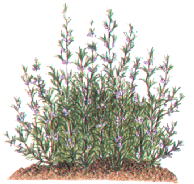 2000
Herb of the Year 2000
Herb of the Year- Family: Labiatae Species: Rosmarinus officinalis Local
Name: Sea Dew
- Habitat: Well-drained soils with a PH of 6.5 - 7.0,
sun.
- Cultivation:Add lime if your soil is too acidic.
- Culinary: Rosemary has a pungent, somewhat piny, mintlike
flavor.
- Medicinal: The blue flowers and leaves of rosemary
contain a volatile oil containing antibacterial effects used as an ingredient
in liniments.
- A dense evergreen, aromatic shrub with resinous, needlelike
leaves. It has soft, blue, pollen-rich flowers that bloom in the spring
and are loved by bees. Most rosemary will begin to bloom in the fall and
continue through the winter, if kept cool. Rosemary originated in the hills
of the Mediterranean, Portugal, and northwestern Spain.
 1999
HERB OF THE YEAR 1999
HERB OF THE YEAR- Lavender is the Herb of the Year in 1999.
- Lavender Botanical Name: Lavandula
angustifolio
- Life Cycle: Perennial Description/Size:
Finest perfume herb available 1-4' tall and about 18" wide "evergry
shrub" - silvery gray foliage year round Member of "labiatae
family" along with basil, mint, oregano, thyme
- Preferred Exposure: Full sun,
but does not like hot weather.
- Prefer protection from wind
- Soil Conditions: Crucial to
be well draining soil Prefer alkaline
- Watering Requirements: Water
regularly first season; after that water only if wilted
- Nourishment: 1 handful of organic
fertilizer and a large "spadeful" of compost annually
- Special Conditions: Buy plants
rather than seeds; often not true from seed and slow to germinate. Harvest
spent blooms regularly even if you don't use them, for longer show. Plant
2-3' apart for good air circulation; prone to fungal problems. Recommend
light mulch of sand which reflects heat up and into center of herb. Prune
in spring; fall "hacking" can cause winter kill.
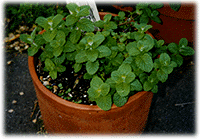 1998
HERB OF THE YEAR 1998
HERB OF THE YEARMentha, commonly known as Mints.
Mints vary in size from the very
tiny, bright green Corsican Mint (Mentha requienii), through the tall,
fuzzy, gray-leafed Apple Mint (Mentha suaveolens). There are variegated
mints, such as Pineapple or Variegated Peppermint. Some mints are smooth-leafed,
others are woolly-leafed. Leaf color may vary from deep green, through
reddish-purple tomes, to the haunting Silver Mint, which is a lovely addition
to Moonlight Gardens, and a favorite for design work, with long wands of
white blooms. Always valued in kitchens across the world, the number of
recipes including mint is inexhaustible. Flavors have an even wider range,
covering lemon, orange, lime, peppermint, spearmint, pineapple, wintergreen,
chocolate, and more. There are mints that are especially good for teas,
such as Blue Balsam Tea Mint & Lebanese Spearmint. In addition to cooking
and teas, mints have long been used in beauty and health preparations,
mouth washes, toothpaste, after shaves & cough syrups. Powerfully scented
peppermint leaves have been used to deter mice from entering cupboards
and closets. Pennyroyal (Mentha pulegium) is a common flea repellent.
The International Herb Association
The Herb Society of America,
dedicated to promoting the knowledge, use and delight of
herbs through educational programs, research, and sharing the experience
of its members with the community.Membership is open to anyone interested
in herbs. Membership may be as an individual or through a unit. Units of
The Herb Society of America are autonomous groups and may have separate
membership requirements.
The National Headquarters is located in Kirtland, Ohio
(near Cleveland) adjacent to the Holden Arboretum. The house was built
in 1841 using local stone by a Lake County farmer, Henry Earl, and is now
considered the oldest stone structure in Lake County. It is on the National
Registry of Historical Places. The building is open Monday through Friday
9:00 A.M. to 5:00 P.M..
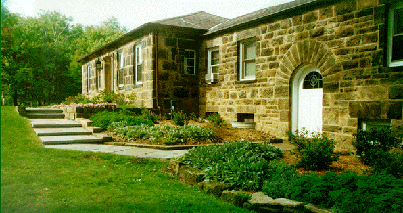
|
FOUNDER
of
the
 POD
POD

|
As the seasons change,
our site will keep in pace.
Please, come back and visit often.
OPEN NOW!
Memorials to Gardeners.
Hopefully, you’ll like what you see.
Please,
Bookmark this page.
Thanks,
Elle

|





